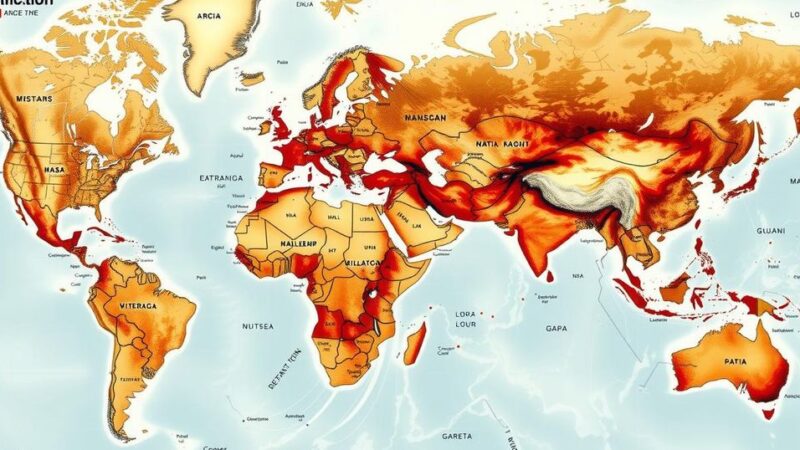The Lebanese-Syrian border is a complex area shaped by smuggling and armed group conflicts, particularly after the Syrian political changes. The ongoing tensions, highlighted by a notable clash in Qasr, raise questions regarding disarmament efforts and the potential for international forces to stabilize the region in accordance with UN Resolution 1701.
The narrative surrounding the Lebanese-Syrian border is rooted in the establishment and delineation of the countries themselves. Spanning approximately 370 kilometers, this border encompasses convoluted terrains, fostering smuggling and disputes among various factions, smugglers, and armed groups. This situation has escalated, particularly following a ceasefire agreement in the south and subsequent political shifts in Syria, diminishing Hezbollah’s access to arms via Syrian territory.
In light of these developments, the administration of President Ahmed al-Sharaa expressed a desire to avoid conflicts with Lebanon and aimed to manage border relations. However, tensions surged along the Bekaa border, especially within Shiite areas where Hezbollah maintains a strong presence. A notable incident in the town of Qasr, involving armed confrontations, stemmed from conflicts between smuggling gangs, but implications extend beyond mere border disputes, impacting the broader strategic landscape.
The complexities introduced are likely to reemerge, particularly against the backdrop of United Nations Security Council Resolution 1701, addressing security in the region amid ongoing Middle Eastern changes. There exists a coordinated international effort aimed at disarming Hezbollah and regulating weaponry in Lebanon exclusively to the Lebanese army’s control.
Current activities along the borders, particularly in Shiite-majority regions, reflect a de facto demarcation influenced by the presence of Hayat Tahrir al-Sham on the Syrian side. Their operations against Lebanese territories aim to enforce disarmament among both Hezbollah and local populations. Thus, discussions around disarming Hezbollah and possibly deploying international forces, as envisioned in the 2006 Resolution 1701, have resurfaced, indicating a critical turning point in the region’s tumultuous history.
The evolution of the Lebanese-Syrian border situation relates to long-standing issues of smuggling, conflicts among armed groups, and broader political dynamics following the Syrian regime’s changes. The implications of border tensions, the potential for international intervention, and the commitment to disarm Hezbollah signify pivotal elements for consideration in future geopolitical strategies in the region.
Original Source: www.lbcgroup.tv






